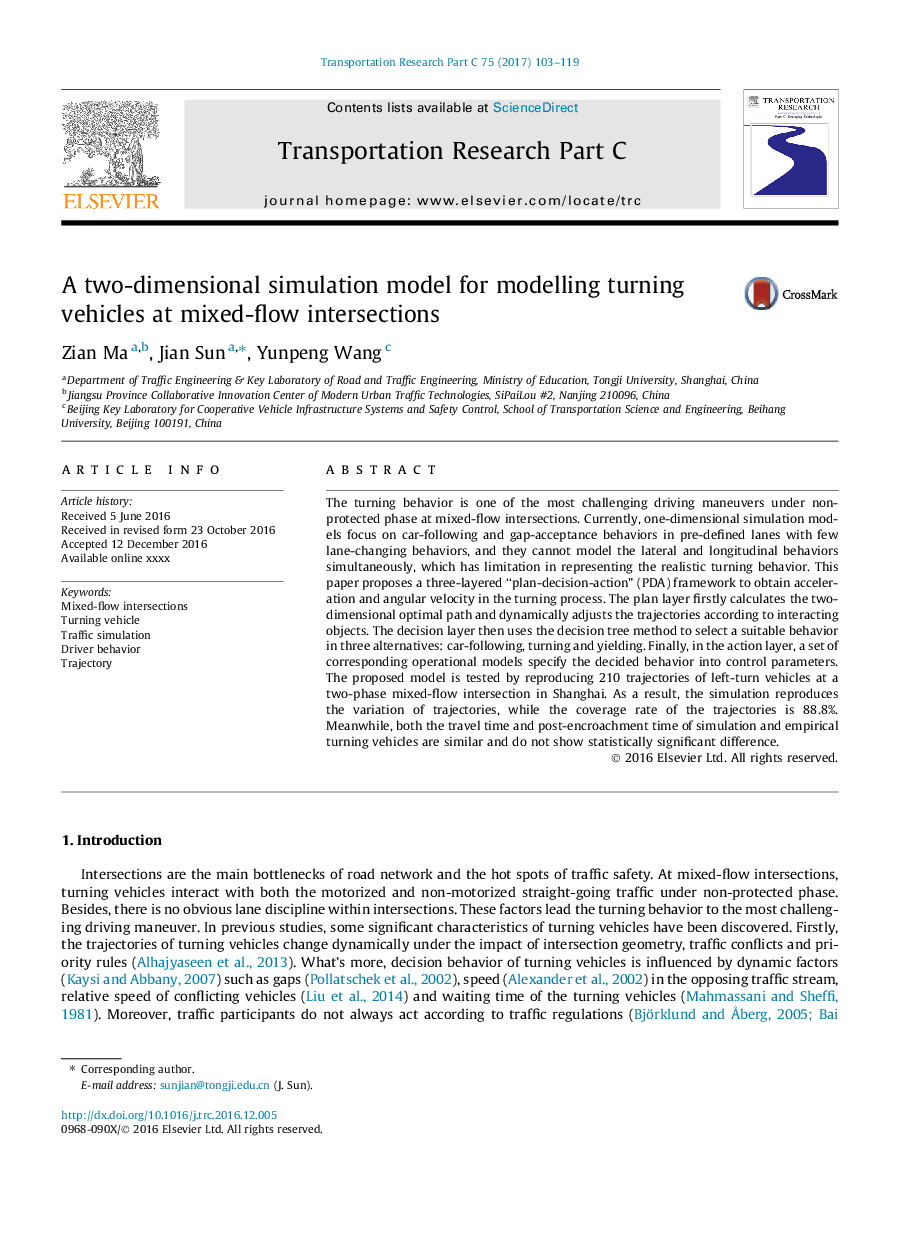| Article ID | Journal | Published Year | Pages | File Type |
|---|---|---|---|---|
| 4968655 | Transportation Research Part C: Emerging Technologies | 2017 | 17 Pages |
Abstract
The turning behavior is one of the most challenging driving maneuvers under non-protected phase at mixed-flow intersections. Currently, one-dimensional simulation models focus on car-following and gap-acceptance behaviors in pre-defined lanes with few lane-changing behaviors, and they cannot model the lateral and longitudinal behaviors simultaneously, which has limitation in representing the realistic turning behavior. This paper proposes a three-layered “plan-decision-action” (PDA) framework to obtain acceleration and angular velocity in the turning process. The plan layer firstly calculates the two-dimensional optimal path and dynamically adjusts the trajectories according to interacting objects. The decision layer then uses the decision tree method to select a suitable behavior in three alternatives: car-following, turning and yielding. Finally, in the action layer, a set of corresponding operational models specify the decided behavior into control parameters. The proposed model is tested by reproducing 210 trajectories of left-turn vehicles at a two-phase mixed-flow intersection in Shanghai. As a result, the simulation reproduces the variation of trajectories, while the coverage rate of the trajectories is 88.8%. Meanwhile, both the travel time and post-encroachment time of simulation and empirical turning vehicles are similar and do not show statistically significant difference.
Related Topics
Physical Sciences and Engineering
Computer Science
Computer Science Applications
Authors
Zian Ma, Jian Sun, Yunpeng Wang,
